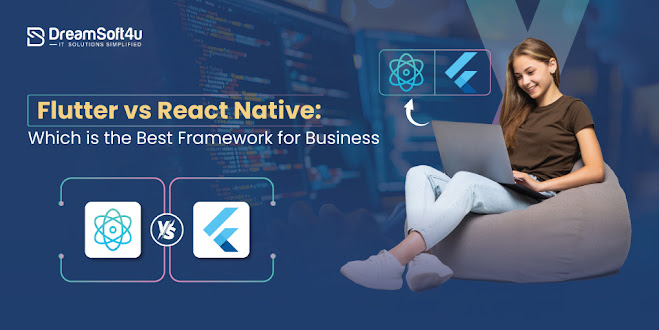Flutter vs React Native: Which is the Best Framework for Business?
Flutter Vs React Native- every investor questions which is the best platform for their app development as they need a fully optimal solution for their business growth. Although the debate between Flutter and react native is nonnegotiable, both platforms have their USP, so let’s understand which is the most preferable framework as per your needs. Moreover, also understand which platform you should consider while developing a mobile app for your business as per the support system for your future updates and modifications.
What is Flutter?
Flutter is an open-source UI software development toolkit created by Google. The idea is to make it possible to build natively compiled applications for mobile, web, and desktop from a single codebase.
What is React Native?
React Native is an open-source framework developed by Facebook for building mobile applications using JavaScript and React. It allows developers to create fully functional, cross-platform apps for both iOS and Android using a single codebase.
Which Platform Should You Choose: Flutter or React Native?
Let’s find the main reason that can help investors identify which is best Flutter vs React Native.
1. Performance
Flutter generally offers better performance because it compiles directly to native ARM code without relying on a JavaScript bridge. It reduces lag and makes Flutter ideal for apps requiring complex animations and smooth interactions.
React Native uses a JavaScript bridge to communicate with native components, which can result in slower performance, especially in high-demand applications, although it is improving with updates.
2. Development Speed
React Native provides faster development due to its use of JavaScript. Java is widely popular and understood by many developers on various frameworks. Its extensive library of pre-built components allows developers to reuse code across platforms, speeding up the development process.
On the other hand, Flutter requires developers to learn Dart and often build custom widgets from scratch. Therefore, it can take more time and provide a highly crafted experience.
3. UI/UX Design
Flutter excels in custom UI/UX design because it offers a rich set of custom widgets that provide consistent design across platforms. Developers have more control over every pixel to ensure a unique look and feel. Users will feel these experiences even on both platforms, which are consistent across iOS and Android.
React Native relies on native components for UI, which means the look and feel are closer to the platform’s defaults. However, it ensures a more native experience that provides less flexibility for custom designs.
4. Developer Availability
Since JavaScript is one of the most popular programming languages, React Native has a larger pool of developers. This makes it easier and faster to find skilled developers who work on React Native. Additionally, it can reduce costs and streamline project timelines.
Flutter developers are less common because Dart is a newer and less widespread language. However, the community is rapidly growing as Flutter gains popularity.
5. Community Support and Resources
React Native benefits from being around longer, meaning it has a larger community, more documentation, and a wealth of third-party libraries. React Native App Development company makes it easier to find solutions to common problems and accelerates the development process.
Comparing Flutter vs React Native, Flutter has a smaller but rapidly growing community. While it still lacks the extensive ecosystem of React Native, Google’s strong support is helping it catch up quickly.
6. Learning Curve
React Native has a gentler learning curve, especially for developers familiar with JavaScript and React. Developers can start building apps quickly without needing to learn a new language.
Flutter has a steeper learning curve due to its use of Dart, a less familiar language. However, once developers master it, Flutter offers more control over the app’s performance and design.
7. Customization and Flexibility
Flutter is the best for projects that need extensive customization. Its flexible widget-based architecture allows developers to modify every aspect of the app’s design and behaviour, offering more control over both UI and performance.
React Native is more restrictive in terms of customization because it relies on native components, which can limit flexibility. However, it ensures that apps maintain a more “native” look and feel on both platforms.




Comments
Post a Comment